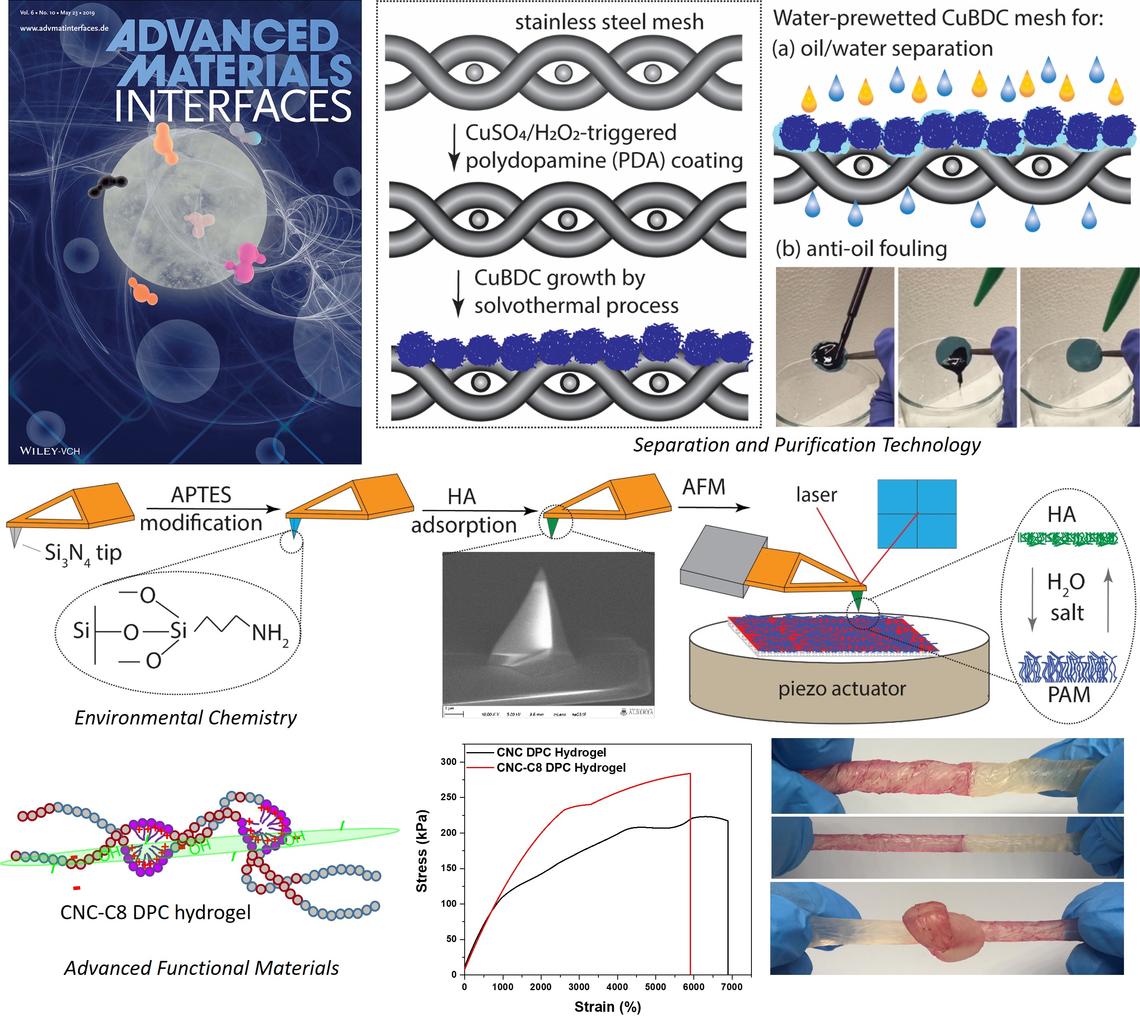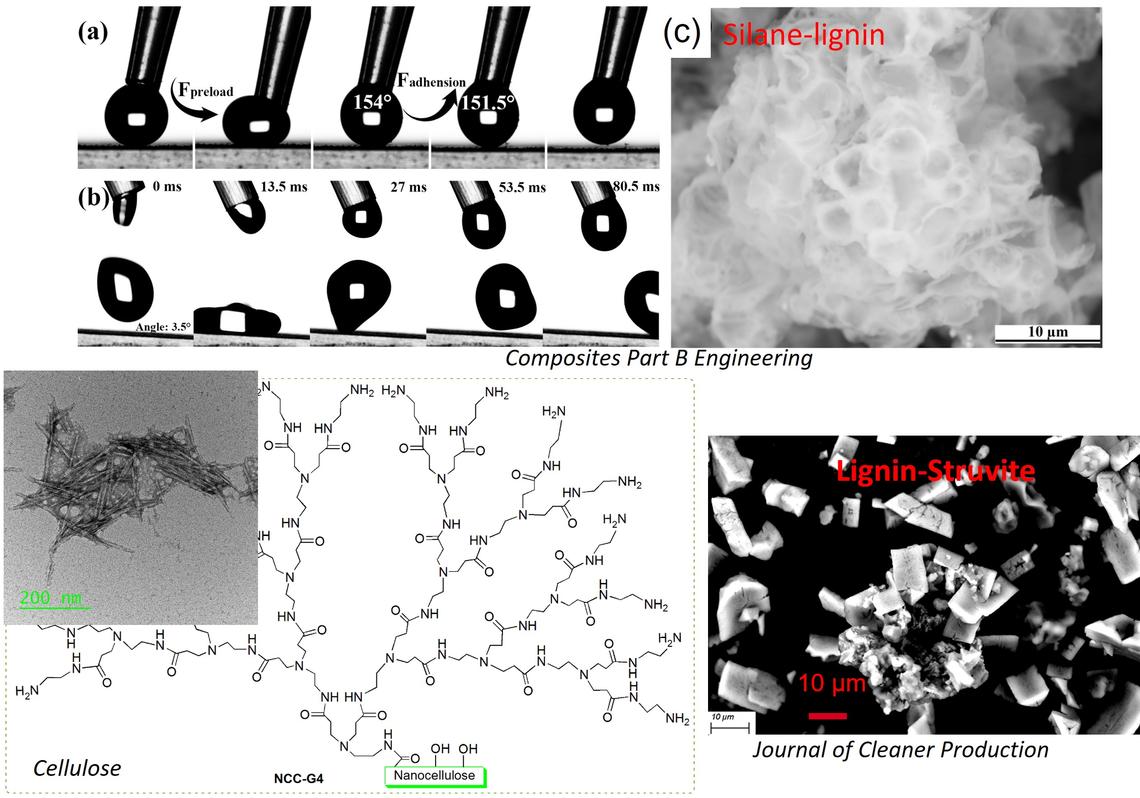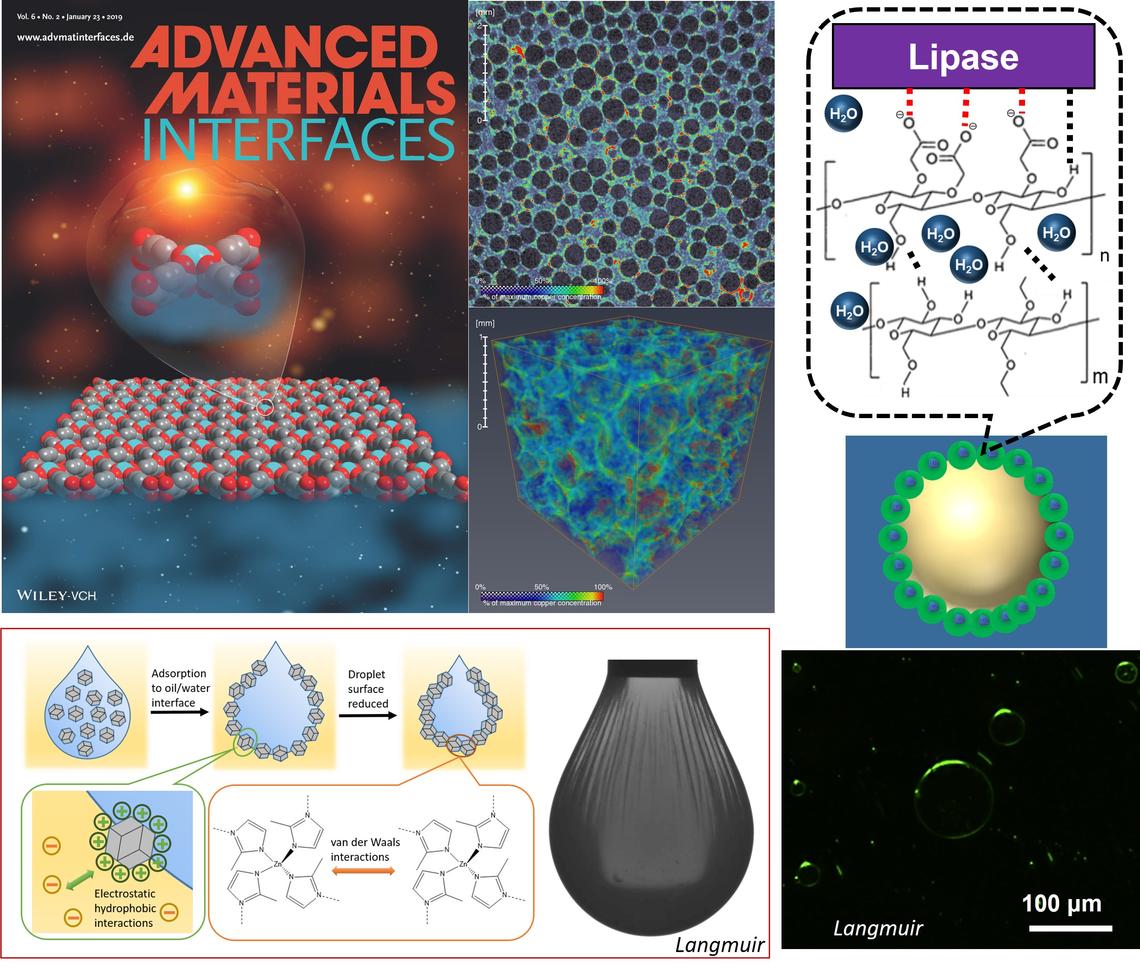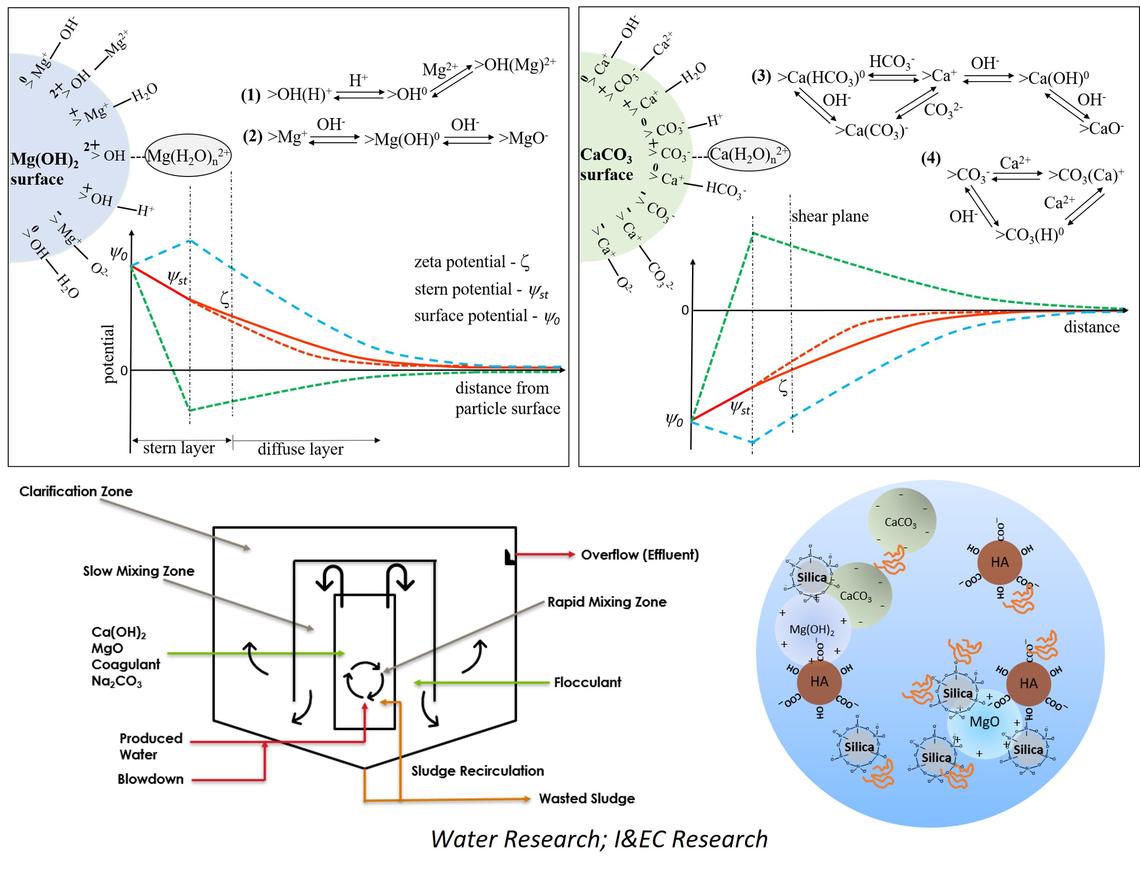Research
Dr. Lu’s multidisciplinary research program is aimed at understanding surface and interfacial science and using this knowledge to (i) more effectively use natural materials, and (ii) create new functional materials, to resolve challenges related to energy and environmental processes. Dr. Lu’s unique approaches have allowed her to gain the knowledge and skills needed to control interactions (van der Waals forces, hydrophobic forces, hydrogen bonding, electrostatic attraction and repulsion, steric repulsion) amongst specific polymeric and non-polymeric building blocks, and to use them to create new materials.
Developing Functional Materials Based on Fundamental Understanding of Surface and Interfacial Phenomena
It is now widely recognized that accurate control over the macroscopic properties and function of any functional materials originates from a detailed understanding of involved surface and interfacial phenomena. This research focuses on fundamentally understanding surface and interfacial phenomena and developing functional materials with engineering applications such as wastewater treatment, CO2 capture, energy harvest, and biomedical engineering. Some advanced analytical techniques are successfully applied, including surface force apparatus (SFA), atomic force microscope (AFM), quartz crystal microbalance with dissipation (QCM-D) to fundamentally understand interactions involved.


Biomimetic and Natural Materials Applied in Environmental Remediation
This research focuses on applying biomimetics and naturally derived materials to design novel materials/processes for environmental remediation including wastewater treatment, tailings settling enhancement, and nutrient recovery from wastewater, CO2 capture. Instead of using synthetic materials, naturally derived materials are more focused on in our study, taking advantage of their characteristics including cost-effectiveness, renewability, and biodegradability.
Properties and Behaviors of Colloidal Particles at Fluid Interfaces
This research focuses on the properties and behaviors of colloidal particles at fluid interfaces, novel materials derived from these particles, and the applications of these materials. Colloid particles, differing in chemistry, size, and shape, can be synthesized such that particle-interface and particle-particle interactions can be modulated using existing colloid science principles. These particles may assemble at the interface between two fluids, and have various applications such as being used as emulsion stabilizers, flocculants, and interfacial catalysts.


Surface and Interfacial Interaction Understanding of Industrial Processes
Industrial systems are usually complex fluids of dissolved solute molecules, small molecular aggregates (colloidal objects such as proteins, bacteria), and macroscopic particles. It is the intermolecular and surface interactions in such multi-component systems, ultimately determine their behaviors and transport properties. Understanding these interactions is challenging and is at the heart of the research. Through close collaboration with industrial sponsors, this research focuses on fundamentally understanding surface and interfacial phenomena involved in important industrial processes. This research is of great significance both academically and practically, which leads to, on one hand, high quality publications, and on the other hand, optimized industrial processes in terms of productivity improvement, cost reduction, environmental pollution and footprint mitigation. One specific example is to improve steam assisted gravity drainage produced water treatment performance through fundamental understanding of warm lime softening (WLS) process.
